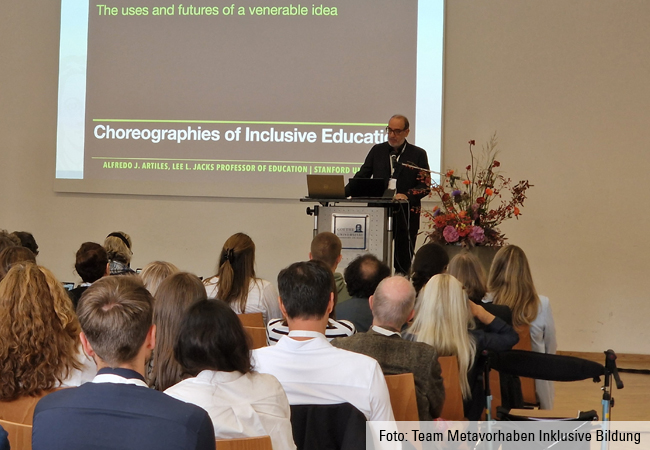In his new book, “Die zwölf Grundannahmen der Netzwerkforschung”, sociologist Christian Stegbauer explains the 12 basic assumptions of network research. Looking at students in their first semester is helpful for examining the structures within which humans act and the new relationships that develop – or else don’t.

“Should we connect on social media?” This is a question people often ask nowadays when they have just met. Is sociological network research responding to the hype around the term ‘networking’? Network research, explains Professor Christian Stegbauer, essentially tries to explain the structures of relationships. In its analyses, network research considers social contexts in the form of interconnections in relationship patterns. One of the basic assumptions is that identity and thus also individuality only develop through interaction with other people and the influence of others, whereby the individual influences others, too. “Today, when people say that networking is important, they tend to use the term metaphorically. But in modern network research and analysis, the metaphorical is of no relevance.”
Networks and network research must first of all be understood as a phenomenon of the modern age. Sociologists such as Ferdinand Tönnies and Georg Simmel assumed that a community develops to form a society. While it was usual in the premodern era to deal with the same people all the time, social circles in modern society fan out more and more. While in a multiplex society of the premodern period people shared different types of relationships with the same group, people in uniplex modern times move in different social circles, compartmentalizing relationships into different functionalities.
Network research is a comparatively young discipline within sociology, whose methodology was only developed in the 1970s. Although sociology has always dealt with relationships, Christian Stegbauer criticizes that it has not looked closely enough at the structures, not even when studying groups. Stegbauer also sees major shortcomings in the classic methods of sociology when it comes, for example, to quantitative surveys: Individuals are asked for an opinion in isolation, avoiding social influence in the interview as far as possible. Depending on the context, however, their answer might be different. As an example, Stegbauer cites a study from the 1930s on racist attitudes in the US: While many Americans working in hotels or other types of accommodation stated in a survey that they did not host Chinese people, additional research showed that Chinese travelers hardly encountered any resentment in actual social practice. “Opinion and behavior, as this example from research clearly shows, are often far removed.” This calls for a more detailed explanation: “The relationship aspect in an interview situation, that is, a kind of microstructure, is also something that network research looks at,” says Stegbauer. One explanation could be, for example, that answers also depend on the specifics of the relationship between the interviewer and the interviewee. Such relationships, which can affect how interviewees respond, develop quite quickly.
University life: A new phase with some old relationship patterns
In his new book, Stegbauer also uses relationships between students to explain the basic assumptions of network research. An astonishing observation for him was that when the participants in his seminar were asked where and when they had met each other, a very large majority replied “during Orientation Week” and often even “on the first day”. This impression is slightly relativized if you examine more closely how acquaintances develop during specific degree programs. “It always also depends on whether it’s a subject with a very large student cohort or a small subject, how the degree program is structured, whether you encounter each other in anonymous lectures or in small classes with just a few fellow students and whether you work on term papers together,” explains Stegbauer. “I know from a seminar I organized with a colleague together with students from Mainz and Frankfurt that in a smaller subject, such as sociology in Mainz, the students know each other far better because they are more likely to bump into each other in class. Frankfurt, by contrast, numbers among the largest sociology institutes in Germany, meaning that the number of seminars is much higher and it’s not so easy to bump into someone. Putting it in a nutshell, you could say: At a large university like Goethe University Frankfurt and, of course, in a big city like Frankfurt, students tend to be lonelier.”
In the last summer semester, Stegbauer and his students examined the significance of Orientation Week for networking among new students. Not everyone who goes to university to study is equally open to making new contacts. But this is particularly important for individuals obliged to move from another city to study and who don’t know anyone yet. People who already live in the city and went to school there, on the other hand, usually have a network of friends and family beyond the university. “You can also consider a third group, those who commute daily. The problem for them is that they have time between courses that they can’t necessarily utilize. As we all know, relationship networks have to be maintained, whether at the place you’re living now or where you lived before. Commuters, however, generally don’t have time for this if they spend hours and hours on the bus or train.”
However, network researchers are above all interested in the structures that form the basis for networks. This “structuration” is something that individuals are not necessarily aware of. To illustrate this, Stegbauer uses the example of encounters on campus between university students and young people in vocational training: There is little exchange or contact, they do not know the other group and do not necessarily reflect either on why no relationships form. “Homophily is another phenomenon in network research and means that the attributes of social contacts mostly coincide. If we make friends within a certain social stratus or group, our shared interests develop further. But that gives us the feeling that we choose our friends and those we relate to ourselves because the structuration, that is, the conditions under which contacts can be established in the first place, occurs behind our backs. You could say it’s an invisible hand of the social fabric that weaves the threads of relationships together.”
Christian Stegbauer
Die zwölf Grundannahmen der Netzwerkforschung
Springer Essentials book series,
Springer Fachmedien Wiesbaden GmbH, 2024, 132 pages
Professor Christian Stegbauer is Associate Professor for Sociology at Goethe University Frankfurt. He is also co-founder of the Deutsche Gesellschaft für Netzwerkforschung (German Association for Network Research) and has been its chairperson since 2018.













